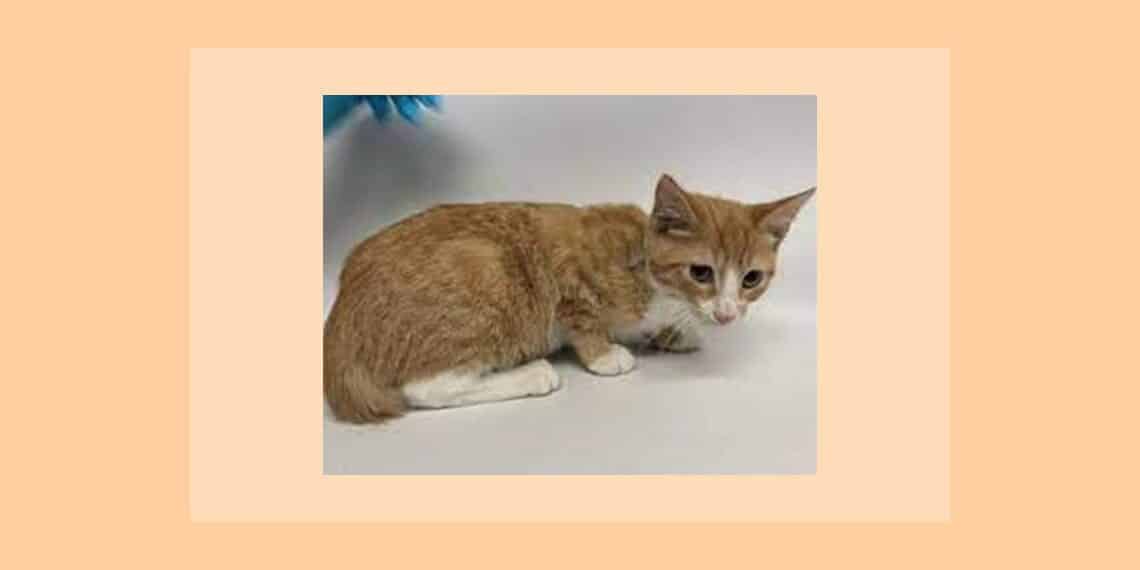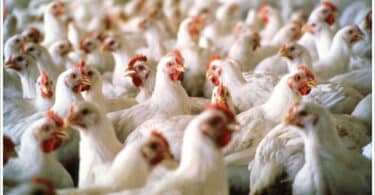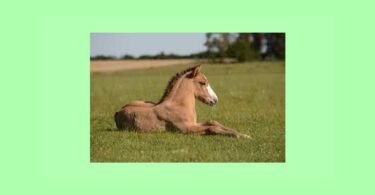Annabelle is 3 years old at the time of the consultation. She is a British Short Hair queen. I saw her because she had developed epileptic attacks over the past six weeks.
She lives indoors in a very cat-populated house. Her main living area is a bedroom upstairs. Annabelle was the relaxed one in the group of four cats that preferred this bedroom, the three others being less social.
She had three fits in the previous month, they all happened in the evening at about the same time (21.30). They appeared suddenly, she salivated during the fits. At one time her eyes were trembling, at another time she was looking fixed and her lids were opening and closing. She came out of the fits just like that; there were no after symptoms. She was very angry when coming out of the first fit.
“Since she had her first fit she is edgy and jumpy, she lies in a corner of the room to be sure there is nobody behind her. Now she gets uptight if she can’t see, she’d rather see something terrifying than not see at all.”
In the surgery she was fidgety until I opened the blinds and then she sat there calmly looking out of the window.
“She has always stood her ground to any of the other cats. She did not attack anybody. She would punch the other cats away to go where she wanted to go. When we took her to a show, she would not tolerate another cat in her cage. The cats around her are all submissive to her.
She had a litter last year. She was a very good mum. Nobody was allowed to see her kittens; she wanted all her time with them, she wasn’t grumpy or nasty but, initially we were not allowed to see them. She had a normal season as cats do, she liked the tom she stayed with. She hasn’t been in season since she had her babies.
As a kitten she was overpowered by her two brothers and we couldn’t get close to her. Once her two brothers were gone she became very affectionate and purring to everyone that came to visit us. You would hear her purring as soon as you entered the room where she was staying. This stopped six months ago. Now she only purrs when you fuss her. As soon as you stop fussing her she stops purring.
She doesn’t like to be babied and cuddled.
She did develop the annoying habit of licking you and then finish off by biting you. Two months before her first fit, she did this to one of our friends. This friend did not take well to this and tipped her severely on the nose and pushed her off her lap. Annabelle then walked off very upset as if she was saying: ‘I am not going to be hurt again.’
It appeared to me we had an etiology: the indignation: Epilepsy from indignation: Staphysagria. The owner agreed it had all started after this episode. Further, Staphysagria would do what they can to avoid getting in the situation of indignation again.
I gave one dose of Staphysagria 1M
One month later; no change. Annabelle was still the same, she had two more fits.
The owner then specified how the irritation she now shows is mostly before, and much less after, the fits. There is talk about Annabelle being angry before her fits.
Mind, anger, epilepsy before: one remedy: Ind.,
and
Mind, excitement, before epilepsy; Art-c, Coff, Ind..
Guy Loutan writes about Ind.: ‘Loses the capacity to assimilate things external to him/her (food, people). Becomes a stranger, non assimilated individual. Becomes a racist.‘
In Phatak: ‘It has some reputation in the treatment of epilepsy, when the attacks are preceded by a furious excitable disposition followed by melancholy, timidity and mildness, or there is peculiar undulating sensation in the brain with obscuration of vision; or sensation as if the brain were frozen, before the attack.‘
There were a few observations that were somewhat in synergy with the statement in Loutan: Annabelle wanted to look out whatever the cost. (Behaviour in the surgery, the owner said she would rather see something frightening than not see at all.) Looking out is a way for a cat to be assured about its surroundings: it keeps guard. That would be an understandable reaction to compensate for a feeling of not being able to assimilate what is around: you keep guard. It can also explain her strange behaviour where she would first lick and then bite people: it indicates again an uncertain relationship to things (people) around. She also stopped purring that easily. Now you needed to make contact; there was no purr at a distance any more. This also suggests a problem with contact with the outside: if the contact was not felt in reality (stroking) it did not exist. In reality the whole story is about interactions.
I prescribed Ind. Tinctora 200, two doses.
The response to the remedy was very fast. Within days she returned to her usual old self. No more fits until 6 months later when her behaviour relapsed a little and she had one fit. She took another dose of Ind. 200 and there have been no more fits for 18 months. She came into season and had another litter of kittens.
A short materia medica of Ind. Tinctora.
There are many symptoms making mention of, waving, bubbling sensations, motions in the head, pulsating in the head, swashing, shaking in the head.
During the provings, patients were anxious, fretful, retired into themselves and ill-humoured.
In children, epilepsy is said to be related to pin worms.
Epileptic aura around stomach
There is often epistaxis with the cough or unexplained epistaxis.
One peculiar symptom: Illusions of sensation: it constantly seems to her as though she had a large goitre, which was very prominent; she was constantly obliged to look down and feel whether it was so.
The thyroid being the gland heavily involved in the differentiation between oneself and the others, this is a nice symbolism referring again to this relation with the surroundings: there is an illusion that there is something wrong with the assimilation; is that why she thinks a goitre may have grown?
Few words on the substance:
From the site:
We inherit the word indigo from the Latin Indicum and the Greek indikon meaning ‘blue dye from India’ or more literally ‘Indian substance’. This name reflects the major commercial centre for the supply of indigo across the Greco-Roman civilization. The dye bearing shrub Ind.fera tinctoria is a common plant in sub-tropical regions. Other indigo bearing plants such as woad ~ Isatis tinctoria grow at more Northerly latitudes and have a lower dye content. Such plants are still exploited for their dye potential today, making indigo a widely accessible and available natural dyestuff as it has been for thousands and thousands of years. The recent resurgence in traditional and organic technologies has boosted the use of natural indigo and woad in arts and crafts.
An Introduction to the Meaning of Blue
“Light blue is the colour of meditation, as it darkens naturally, it becomes the colour of dreams”
One way to view the importance of Ind. dye is to look first at the meaning and symbolism of the colour blue. In many cultures the symbolism of Blue is derived primarily from the sky. Blue appears frequently in nature, it is seen in vast bodies of water, ice and in the heavens it is a cold colour with natural esoteric qualities. Blue is the colour of the unreal, the surreal and the heavens, it is said to represent truth, death and Gods. It thus stands as the cornerstone to ideas of spirit in many forms.
We have always sought to clothe ourselves in blue to be closer to the realm of the gods, or just to be cool. The contemporary importance of indigo blue can be seen almost everywhere across the globe not least because indigo is the principal colour of denim jeans in the West
“Omnes vero se Britanni vitro inficiunt, quod caeruleum efficit colorem.”
Numerous accounts from Europe to the Arab world hint at the historical use of blue to stain skin for war, religious and social rites. The quote above is from Julius Caesar’s ‘The Conquest of Gaul’; it translates as “All the British colour themselves with glass, which produces a blue colour.” This single reference is widely believed to refer to a practice of body art among the Pictish peoples of Scotland. While one has to be cautious with such interpretations it hints at a widespread use of blue on skin.
From
Ind. is a challenging dye to use because it is not soluble in water; to be dissolved, it must undergo a chemical change (reduction). When a submerged fabric is removed from the dye-bath, the indigo quickly combines with oxygen in the air and reverts to its insoluble form.
When it first became widely available in Europe in the sixteenth century, European dyers and printers struggled with indigo because of this distinctive property. It also required several chemical manipulations, some involving toxic materials, and had many opportunities to injure workers. In fact, during the 19th century, English poet William Wordsworth referred to the plight of indigo dye workers of his hometown of Cockermouth in his autobiographical poem “The Prelude”. Speaking of their dire working conditions and the empathy that he feels for them, he writes, “Doubtless, I should have then made common cause/ With some who perished; haply perished too,/ A poor mistaken and bewildered offering – / Unknown to those bare souls of miller blue.”
A pre-industrial process for dyeing with indigo, used in Europe, was to dissolve the indigo in stale urine. Urine reduces the water-insoluble indigo to a soluble substance known as indigo white or leucoindigo, which is yellow, but because small amounts are easily oxidized to indigo, the solution is often yellow-green. Fabric dyed in the solution turns blue after the indigo white oxidizes and returns to indigo. Synthetic urea to replace urine became available in the 1800s.
Note: The passage in italic gives sense to the interpretation of the remedy in Loutan: the hydrophobic quality of the dye which makes it difficult to use is an illustration of its inability to mix with the surroundings, to assimilate the surrounding.
If anybody has a case(s) of this remedy it would be very interesting to read it (them) to see if the suggestion of the nucleus for the remedy is valid. Please post to the editor.






